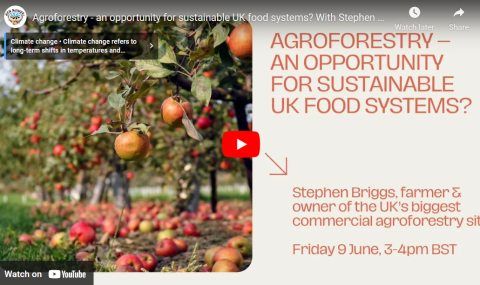Agroforestry – through silvopasture and silvoarable systems, as well as better integrated hedges – may hold some answers. Cambridgeshire farmer, soil scientist, and UK agroforestry pioneer, Stephen Briggs, has successfully integrated fruit trees and arable crops: The result has been improved resilience to economic and weather shocks, healthier soils, better water retention, and increased productivity. In this webinar, Stephen shares his insights from his farm and working with agroforesters around the world. Stephen covers:
- Why he went into agroforestry (the business and environmental case
- What his system comprises of & his routes to market
- How agroforestry has benefited his farm
- More widely, benefits and opportunities from agroforestry
- Practical considerations – system design, machinery, labour, added value, challenges
- ELMS and what we could expect
- What we can learn from other countries
The seminar is chaired by Prof Neil Ward, a co-lead of the AFN Network+, professor at the Tyndall Centre for Climate Change Research, and author of Net Zero, Food and Farming: Climate Change and the UK Agri-Food System (Routledge 2023).


